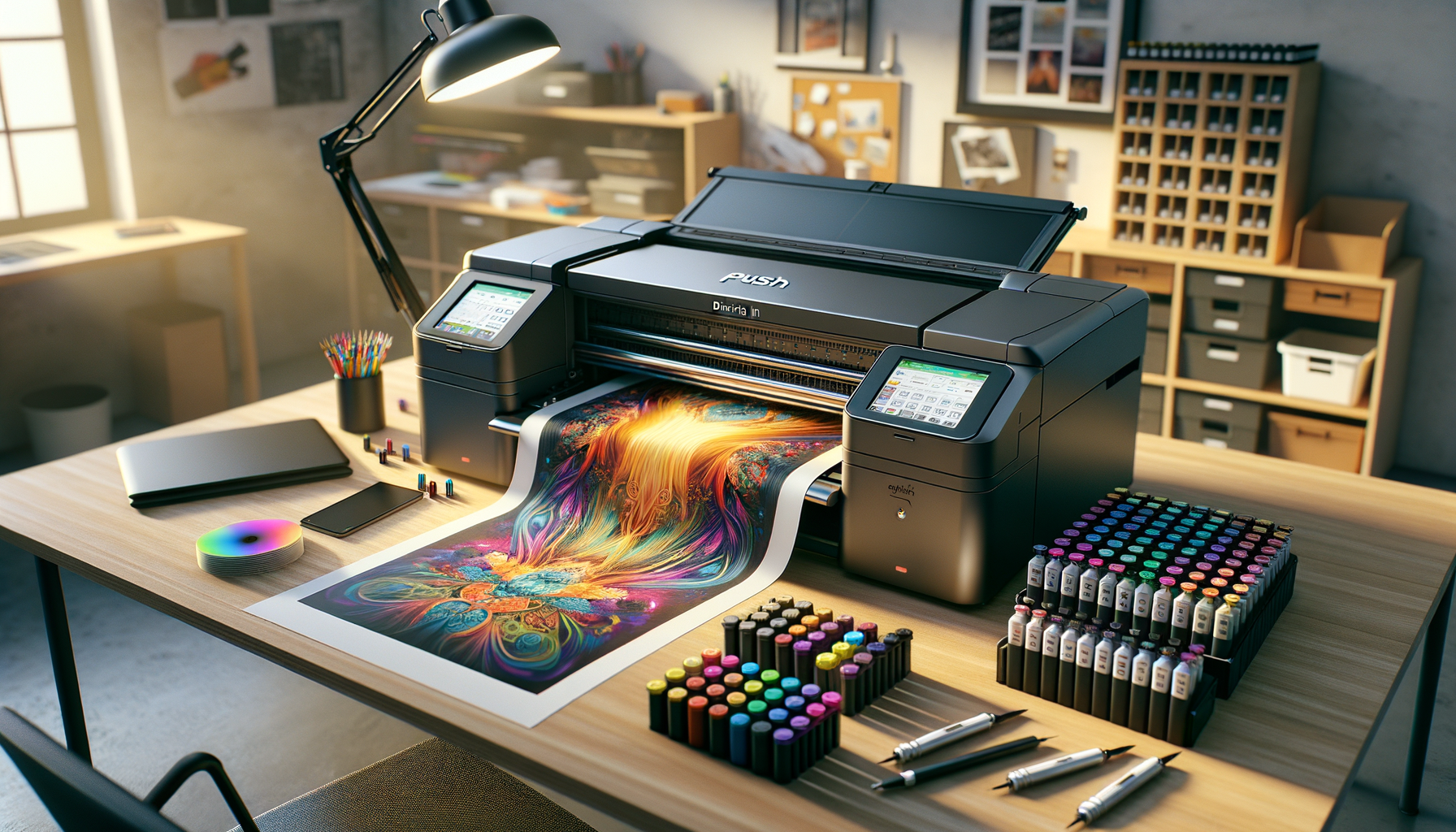
DTF Printers Transform Design
Introduction to Direct-to-Film Printing
In the ever-evolving world of textile printing, Direct-to-Film (DTF) printing has emerged as a game-changer. This innovative technology allows for vibrant, long-lasting prints that boast excellent detail and color accuracy. Unlike traditional methods, DTF printing transfers designs directly onto a special film, which is then applied to the fabric. This process opens up new possibilities for designers and businesses, offering a cost-effective and versatile solution for creating high-quality prints on a wide range of materials.
The Process and Technology Behind DTF Printing
DTF printing begins with the creation of a digital design, which is printed onto a specialized film using a DTF printer. The printer uses water-based inks that are environmentally friendly and safe for use on textiles. Once the design is printed, a layer of adhesive powder is applied to the film, ensuring the ink adheres properly to the fabric. The film is then heated to cure the ink and adhesive, making it ready for transfer.
One of the key advantages of DTF printing is its ability to produce vivid colors and intricate details, making it ideal for complex designs. The technology also allows for printing on a variety of fabrics, including cotton, polyester, and blends, without the need for pre-treatment. This flexibility makes DTF printing a popular choice for custom apparel, promotional items, and more.
Advantages of Direct-to-Film Printing
DTF printing offers several advantages over traditional printing methods. Firstly, it provides exceptional color vibrancy and detail, which is crucial for creating eye-catching designs. The prints are also durable and resistant to fading, cracking, or peeling, ensuring they maintain their quality over time.
Another significant benefit is the cost-effectiveness of DTF printing. The process eliminates the need for screens and setup fees, making it ideal for small to medium-sized print runs. Additionally, the ability to print on demand reduces waste and inventory costs, making it an environmentally friendly option.
Furthermore, DTF printing is highly versatile, allowing for customization and personalization of designs. This makes it a popular choice for businesses looking to offer unique products or cater to niche markets.
Comparing DTF Printing with Other Methods
When compared to other printing methods such as screen printing and Direct-to-Garment (DTG) printing, DTF printing stands out for its versatility and quality. Screen printing is known for its durability and vibrant colors but requires significant setup time and costs, making it less suitable for small orders.
DTG printing, on the other hand, offers excellent detail and is ideal for small runs but is limited to certain fabric types and often requires pre-treatment. DTF printing overcomes these limitations by providing high-quality prints on a variety of materials without the need for extensive setup or pre-treatment.
Overall, DTF printing combines the best aspects of both screen printing and DTG printing, offering a flexible and cost-effective solution for high-quality textile printing.
Future Prospects of Direct-to-Film Printing
As technology continues to advance, the future of DTF printing looks promising. With ongoing improvements in ink formulations and printer technology, we can expect even greater color accuracy and durability in the years to come. Additionally, the growing demand for sustainable and eco-friendly printing solutions is likely to drive further innovation in this field.
Businesses and designers are increasingly recognizing the potential of DTF printing to create unique, high-quality products that stand out in a competitive market. As more companies adopt this technology, we can anticipate a wider range of applications and an expansion of the market for custom printed textiles.
In conclusion, Direct-to-Film printing is poised to transform the textile printing industry, offering a versatile, cost-effective, and high-quality solution for a wide range of applications.


